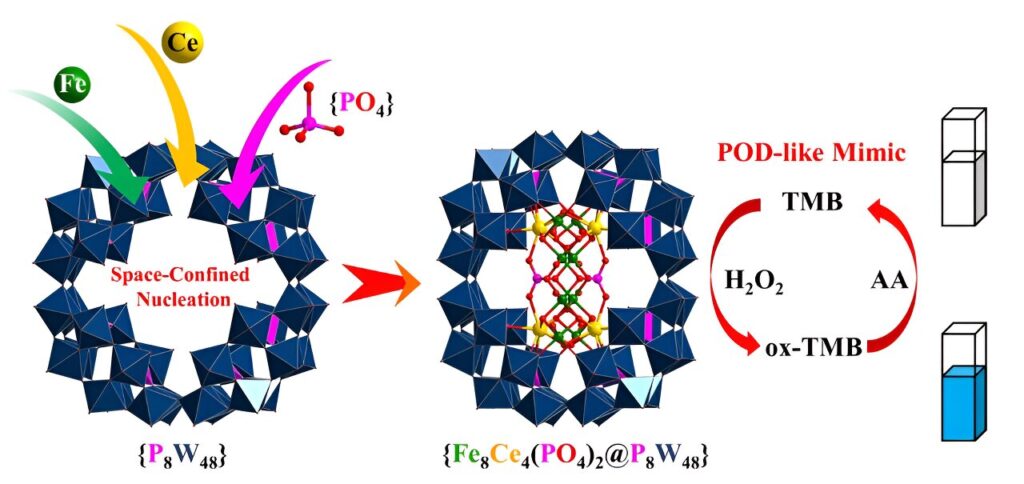By design, synthetic molecules typically have specific jobs to prevent or accelerate reactions between other molecules. To help control more complicated reactions, researchers may harness spare space in one molecule to synthesize another chemical structure. The host-guest assembly can better induce the specific desired reaction than either component individually—if the scientists designing the assembly get it right.
A multi-institution team based in China has reported a novel cluster—the guest—that nucleated inside of a polyoxometalate (POM) nanoreactor—the host. The resulting host-guest assembly has enhanced peroxidase-like activity, meaning it could help accelerate reactions involving the decomposition of H2O2.
These reactions are critical in biological processes, such as protecting genetic material from oxidation damage, and have implications for advanced biotechnological processes, according to the researchers.
They published their work in Polyoxometalates.
“The advantages of space-confined synthesis are not limited to the customization of shape, size, and composition, but of precise crystal orientation and spatial position of desired products,” said corresponding author Peng Yang, professor in the College of Chemistry and Chemical Engineering, Advanced Engineering Research Center of the Ministry of Education, Hunan University.
“From nanotechnology to crystal engineering, a multitude of chemical forces have been employed to steer the confined growth of guest components within the host containers, such as carbon nanotubes or metal-organic framework/cages.”
The POM is a molecular framework that consists of multiple metal ions and shared oxygen atoms with a cavity at the center. In this cavity, researchers synthesized a novel multi-component cluster using positively charged ions of iron and cerium, as well as phosphate. The cluster nucleated, meaning it formed a cluster with a clear center in the POM’s cavity.
“We found that novel structures of polyoxometalates can be obtained by confining the synthons within specific nanospaces, and the confined synthetic method excels at allowing us to take advantage of those nanospaces,” Yang said, explaining that synthons are not a reagent but can signal the start of a reagent needed to synthesize a target molecule. “Within the cavity of this polyoxometalate, we successfully nucleated this novel cluster for the first time.”
The researchers analyzed the cluster’s structure and composition, as well as investigated its potential functions. According to Yang, preliminary studies on the POM cluster yielded promising results attesting to its ability to detect ascorbic acid—an antioxidant that helps protect cells from free oxygen that can inflect damage—with high sensitivity and specificity.
“This work opens up more possibilities in the development of POM-based molecular assemblies from customized synthesis via structural design to application expansion,” Yang said.
Provided by
Tsinghua University Press


